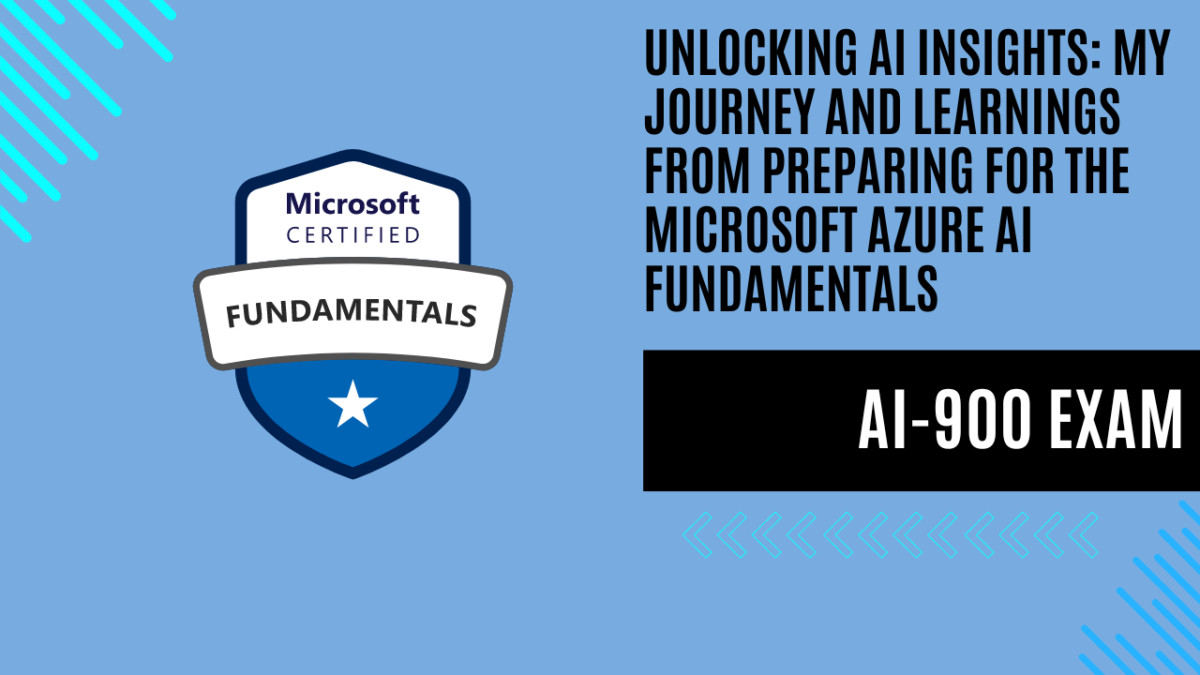
Unlocking AI Insights: My Journey and Learnings from Preparing for the Microsoft Azure AI Fundamentals AI-900 Exam
Beyond the Badge: Embracing Learning Through Certifications
As a Senior Developer with two decades of experience in the industry, I’ve often been questioned about my perspective on certifications. Frankly, I don’t see certifications as guarantees for better job opportunities or higher salaries. Rather, I regard them as invaluable tools for learning, a way to deepen my grasp of a subject and to commit myself to a deadline.
In my journey, I’ve come to depend on certifications not merely as badges to enhance my resume, but as structured learning paths that set clear goals and serve as checkpoints for assessing my knowledge. I don’t pursue certifications in entirely unfamiliar fields; instead, I opt for those where I already possess a foundational understanding but desire to explore further depths.
My recent achievement of the Microsoft Azure AI Fundamentals AI-900 certification exemplifies this approach. It wasn’t about chasing after a shiny badge; it was about immersing myself in the realm of artificial intelligence within the Azure ecosystem, expanding my horizons, and refining my skills.
Understanding Microsoft Certified: Azure AI Fundamentals
The Microsoft Certified: Azure AI Fundamentals (AI-900) certification is designed to validate an individual’s understanding of fundamental concepts related to machine learning and artificial intelligence (AI) within the Microsoft Azure environment. This certification serves as an entry point for individuals with both technical and non-technical backgrounds who are interested in AI and machine learning.
Candidates pursuing this certification are expected to demonstrate proficiency in several key areas:
- Describe Artificial Intelligence workloads and considerations: Understand the various AI workload types and their applications, as well as the considerations involved in implementing AI solutions.
- Describe fundamental principles of machine learning on Azure: Gain knowledge of basic machine learning concepts and how they are applied in Azure services.
- Describe features of computer vision workloads on Azure: Familiarize oneself with computer vision concepts and the Azure services available for implementing computer vision solutions.
- Describe features of Natural Language Processing (NLP) workloads on Azure: Understand the principles of natural language processing and the Azure services tailored for NLP tasks.
- Describe features of generative AI workloads on Azure: Explore the capabilities of generative AI and the Azure services that enable the development of generative AI models
What Exactly is Artificial Intelligence?
In the vast landscape of technology, Artificial Intelligence (AI) stands as a beacon of innovation, enabling us to create software solutions that transcend traditional boundaries and redefine what’s possible.
Let’s explore the core components of AI and unveil its transformative potential:
Machine learning
Machine learning traces its roots back to statistics and mathematical modeling of data. At its core, machine learning revolves around leveraging past observations to forecast unknown outcomes or values. For instance a physician could utilize clinical data gleaned from previous patients to conduct automated assessments, predicting the likelihood of a new patient developing diabetes based on various factors such as weight, blood glucose levels, and other pertinent measurements.
Fundamentally, a machine learning model is a software application that computes an output value based on one or more input values. The process of defining this function is known as training. Once the function is defined, it can be used to predict new values, a process called inferencing.
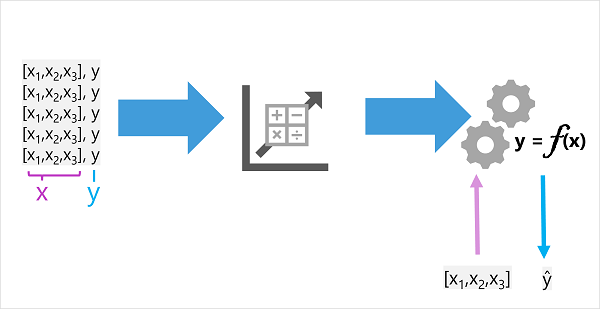
Microsoft Azure Machine Learning is a cloud-based service tailored for training, deploying, and overseeing machine learning models. It includes:
- Exploring data and preparing it for modeling.
- Training and evaluating machine learning models.
- Registering and managing trained models.
- Deploying trained models for use by applications and services.
- Reviewing and applying responsible AI principles and practices.
Computer vision
Computer vision encompasses the abilities within AI to interpret the visual world through cameras, videos, and images. In the context of Azure services, Azure AI Vision service is a powerful tool that facilitates various image analysis tasks.
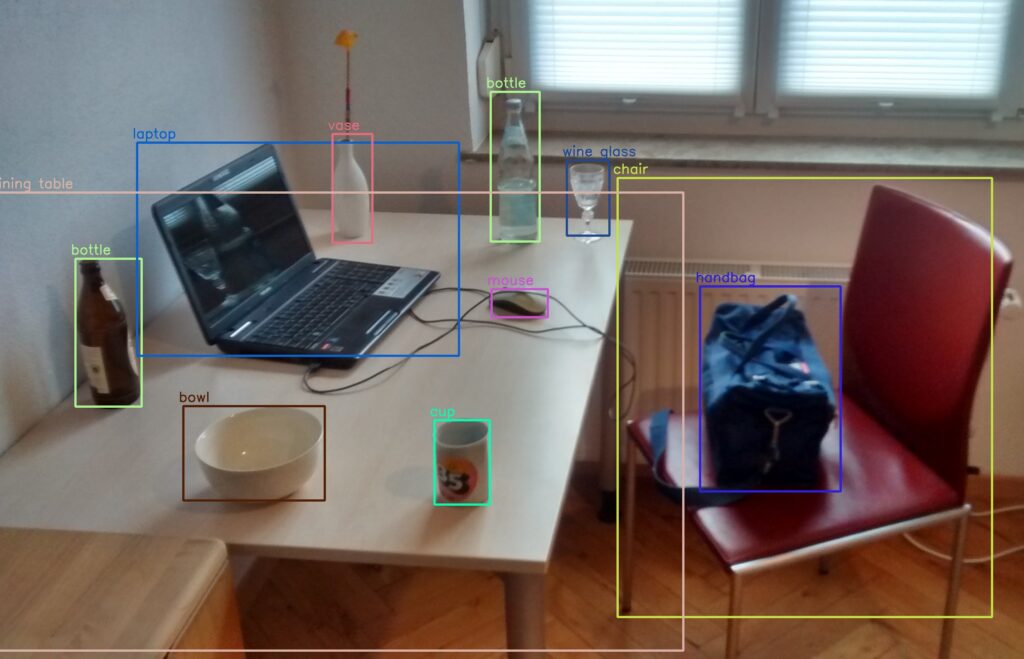
Azure AI Vision supports multiple image analysis capabilities, including:
- Optical character recognition (OCR) – extracting text from images.
- Generating captions and descriptions of images.
- Detection of thousands of common objects in images.
- Tagging visual features in images
Natural Language Processing
Natural Language Processing (NLP) is an AI discipline focused on developing software that comprehends written and spoken language. With NLP, you can build applications capable of:
- Analyzing and interpreting text from various sources like documents, email messages, and online content.
- Understanding spoken language and generating spoken responses through speech synthesis.
- Facilitating automatic translation of spoken or written phrases across different languages.
- Interpreting commands and determining suitable actions based on the input received.
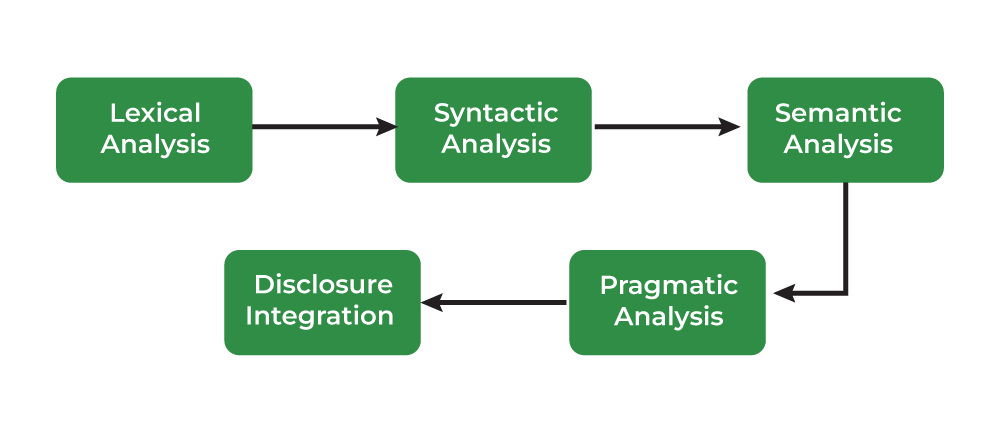
Microsoft’s Azure AI offers robust tools for building natural language processing (NLP) solutions. With Azure AI Language, you can leverage features such as text understanding and analysis, training conversational language models for understanding spoken or text-based commands, and developing intelligent applications. Additionally, Azure AI Speech provides a comprehensive set of capabilities for NLP solutions. This includes speech recognition and synthesis, real-time translations, conversation transcriptions and more.
Document Intelligence
Document Intelligence encompasses the capabilities within AI focused on managing, processing, and utilizing large volumes of diverse data extracted from forms and documents. This area of AI enables the creation of software capable of automating processing tasks for various types of documents, including contracts, health records, financial forms, and more.
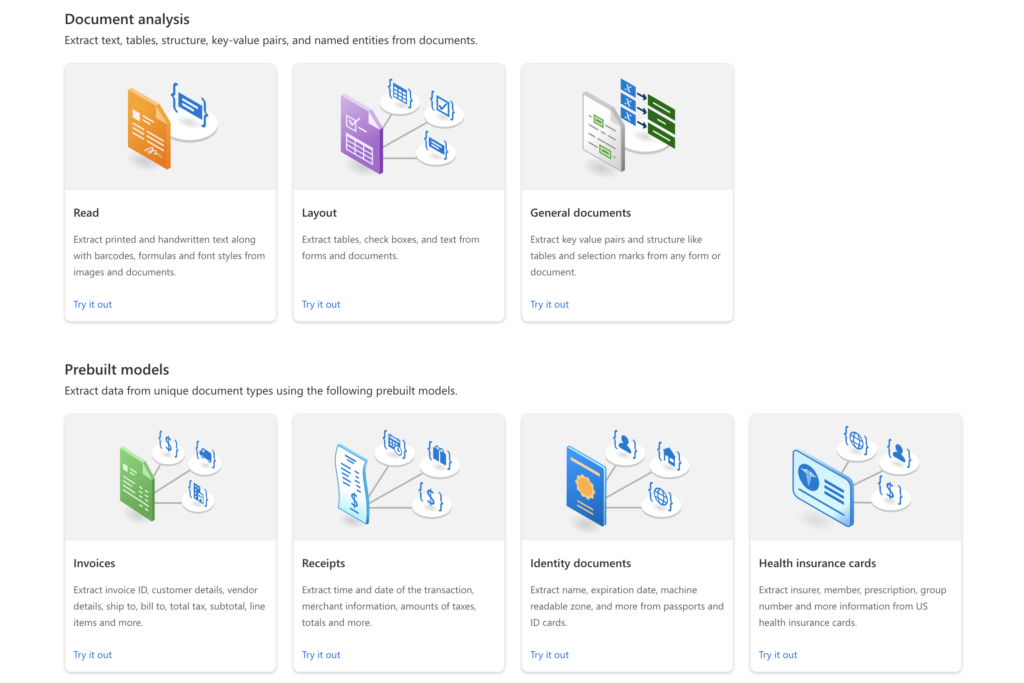
Azure AI Document Intelligence is a cloud-based Azure AI service that enables you to build intelligent document processing solutions. Massive amounts of data, spanning a wide variety of data types, are stored in forms and documents. Document Intelligence enables you to effectively manage the velocity at which data is collected and processed and is key to improved operations, informed data-driven decisions, and enlightened innovation.
Knowledge mining
Knowledge mining is the term used to describe solutions that involve extracting information from large volumes of often unstructured data to create a searchable knowledge store.
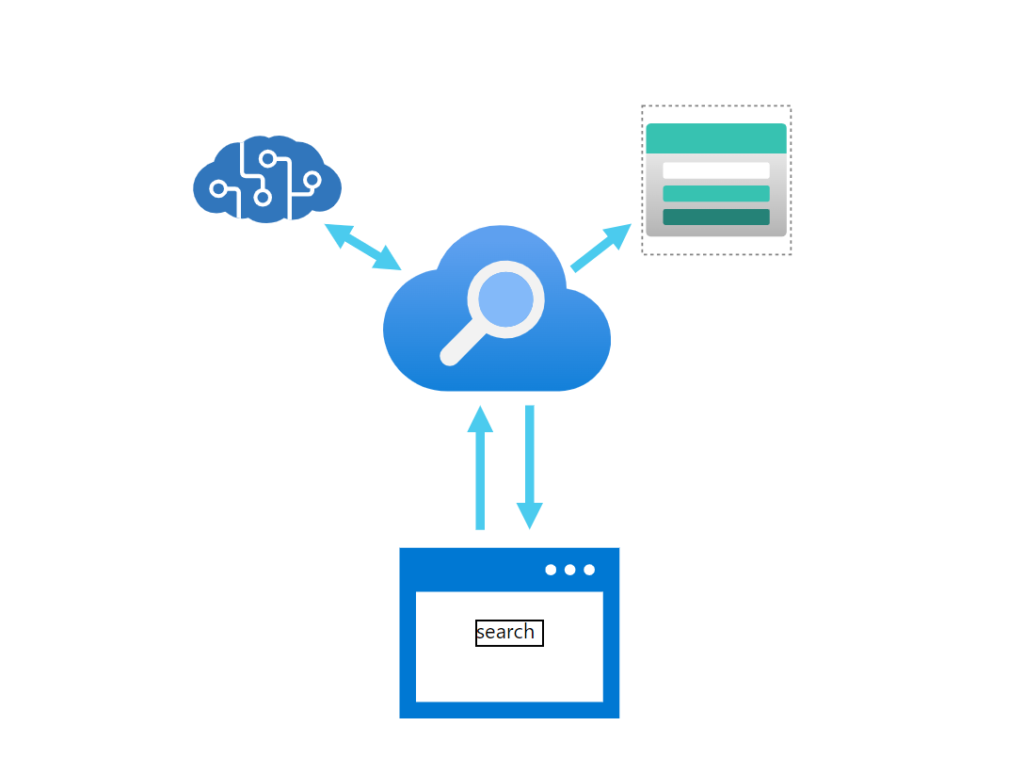
One Microsoft knowledge mining solution is Azure AI Search, an enterprise, search solution that has tools for building indexes. The indexes can then be used for internal only use, or to enable searchable content on public facing internet assets.
Azure AI Search can utilize the built-in AI capabilities of Azure AI services such as image processing, document intelligence, and natural language processing to extract data. The product’s AI capabilities makes it possible to index previously unsearchable documents and to extract and surface insights from large amounts of data quickly.
Generative AI
Artificial Intelligence (AI) mimics human behavior through machine learning, learning from its environment to perform tasks without specific instructions. Generative AI is a subset of AI that generates new content. It’s commonly found in chat applications, ex ChatGPT, where it responds to natural language input with diverse outputs like text, images, or code.
Generative AI applications rely on large language models (LLMs), a type of machine learning model used for various natural language processing (NLP) tasks, such as:
- Analyzing sentiment or categorizing text.
- Summarizing text.
- Comparing text sources for similarity.
- Creating new natural language content.
Azure OpenAI Service is Microsoft’s cloud-based solution for deploying, customizing, and hosting large language models. It seamlessly integrates OpenAI’s state-of-the-art models and APIs with the security and scalability of the Azure cloud platform. Through its partnership with OpenAI, Azure OpenAI empowers users to access the latest advancements in language model technology.
Azure OpenAI offers a variety of models tailored to different needs:
- GPT-4 Models: The latest iteration of generative pretrained models, capable of generating natural language and code completions based on prompts.
- GPT 3.5 Models: These models also generate natural language and code completions based on prompts. GPT-3.5-turbo models, optimized for chat-based interactions, excel in various generative AI scenarios.
- Embeddings Models: These models convert text into numerical vectors, facilitating language analytics tasks such as text similarity comparisons.
- DALL-E Models: Designed to generate images from natural language prompts, DALL-E models are currently in preview. They are not visible in the Azure OpenAI Studio interface and do not require explicit deployment.
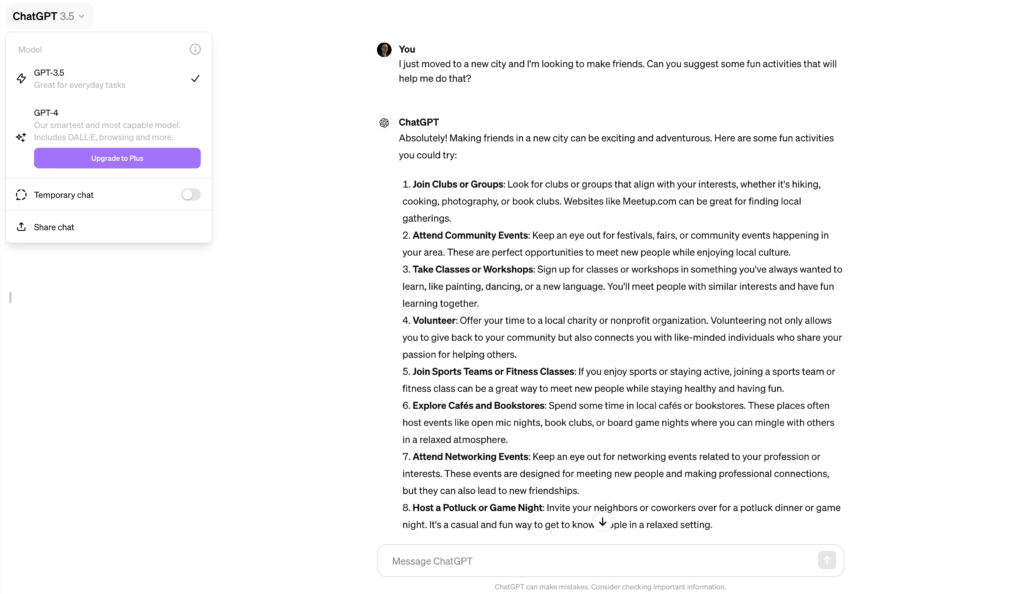
Azure OpenAI accommodates a variety of generative AI tasks including:
- Natural Language Generation
- Text Completion: Generate and modify text
- Embeddings: Search, classify, and compare text
- Code Generation
- Generate, edit, and explain code
- Image Generation
- Generate and edit images
Exploring Generative AI with Responsible Practices
Understanding the ethical implications and societal impact of AI is pivotal. Throughout the exam, you’ll encounter numerous questions probing your comprehension of responsible AI practices. Let’s delve deeper into this essential topic.
Microsoft’s approach to responsible generative AI is crafted to be pragmatic and implementable. It outlines a four-stage process for developing and executing a responsible AI plan specifically tailored for the use of generative models. These stages are:
- Identify potential harms pertinent to your intended solution.
- Assess the occurrence of these harms in the outputs produced by your solution.
- Implement measures to mitigate these harms across various layers of your solution, aiming to reduce their occurrence and impact. It also involves transparently communicating potential risks to users.
- Operate the solution responsibly by defining and adhering to a deployment and operational readiness plan.
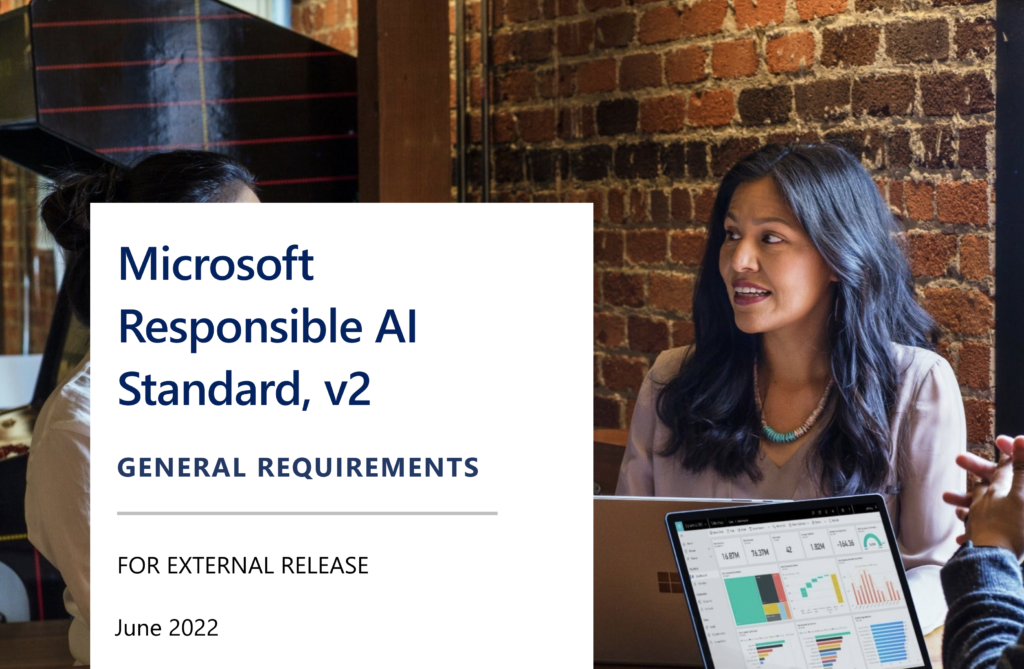
Here’s a summary of the six principles guiding Microsoft’s approach to responsible AI:
- Fairness: AI systems should treat all individuals fairly, without bias based on factors like gender or ethnicity. Tools like Azure Machine Learning help identify and mitigate bias in models.
- Reliability and Safety: AI systems must perform reliably and safely, especially in critical applications like autonomous vehicles or medical diagnosis. Rigorous testing and deployment management are essential to ensure system integrity.
- Privacy and Security: AI systems should respect privacy and security, safeguarding personal data throughout training and deployment phases.
- Inclusiveness: AI systems should empower and engage all members of society, regardless of physical ability, gender, or other factors.
- Transparency: Users should understand the purpose and workings of AI systems, including any limitations.
- Accountability: Designers and developers should adhere to ethical and legal standards, ensuring accountability for AI systems.
Conclusions and Future Perspectives
In conclusion, while this exam focused more on theory than practical applications, it’s been a valuable foundation. I’m excited to show how to apply AI in real-world scenarios through upcoming articles, starting with integrating OpenAI into C# programs. Even though I’m not a senior data scientist, this exam has given me a strong AI introduction. I’m eager to keep learning and growing in this field.
I understand that these concepts might be overwhelming for newcomers, but it’s important to embrace AI’s role in our future. My certification is proof of my dedication to start exploring this technology.
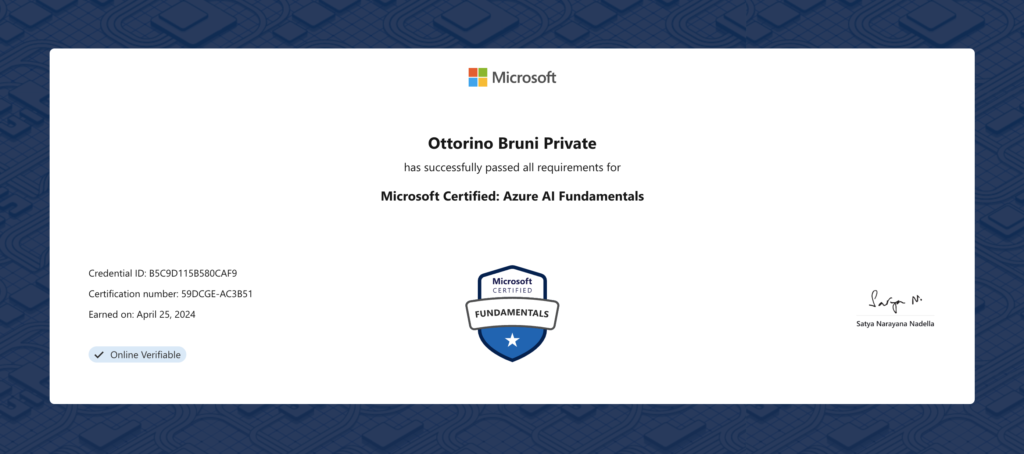
If you think your friends or network would find this article useful, please consider sharing it with them. Your support is greatly appreciated.
Thanks for reading!
🚀 Discover CodeSwissKnife, your all-in-one, offline toolkit for developers!
Click to explore CodeSwissKnife 👉
